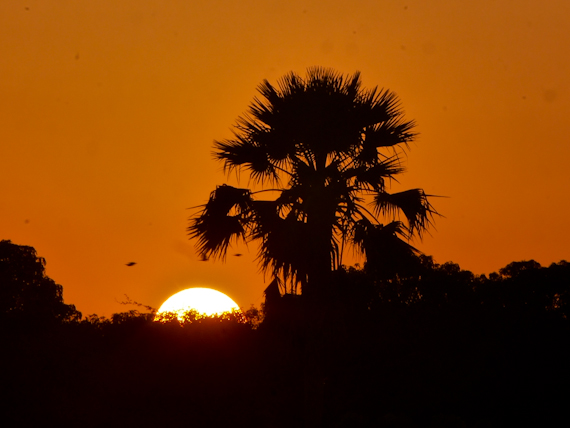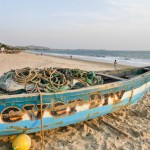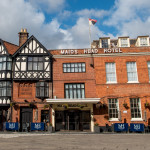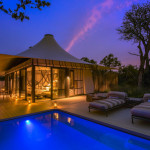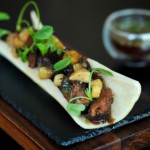Rupert Parker discovers the real Gambia as he ventures east upriver from the capital Banjul
The Gambia is firmly on the map for UK travellers who are seeking winter sun. They never venture much beyond their beachside hotels, content to lie on their sun loungers, occasionally trotting to the bar for a top-up. That’s a shame because, after all this is Africa, and there’s far more to the country than just sun, sea and sand.
You don’t have to go far from your hotel to see some of the area’s attractions. There’s the Katchikally Crocodile Pool at Bakau, where you can see over 100 crocs, including the 75-year-old Charlie, over 2.5m long. At Paradise Beach, in Sanjang, there are displays of traditional wrestling, accompanied by a troupe of drummers.
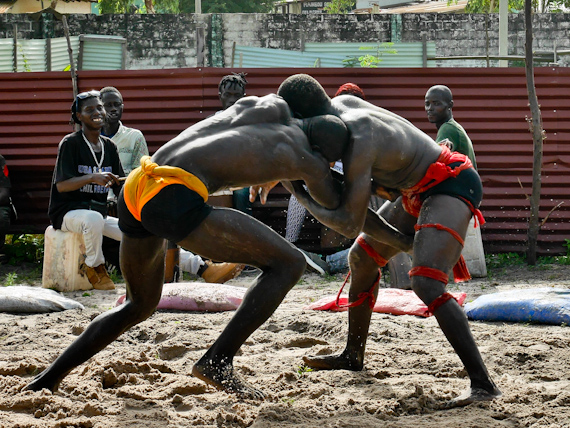
Early morning you can take a kayak excursion along Tanji Creek through the mangroves, home to some 540 different species of birds. In the late afternoon, just nearby at Tanji Beach, watch the fishermen bringing in huge hauls of fish as the sun sinks slowly behind their colourful boats.
Even the low key capital of Banjul is worth a visit, a mix of old colonial houses and low rise modern office buildings, best seen from the top of Arch 22, a folly built by the previous dictator. There’s a small museum which details the history of the country and also has a collection of musical instruments. In the Royal Albert Market, in the labyrinth of makeshift stalls, as well as the usual tourist souvenirs, you’ll find exotic fruit and veg and everything the African household needs.
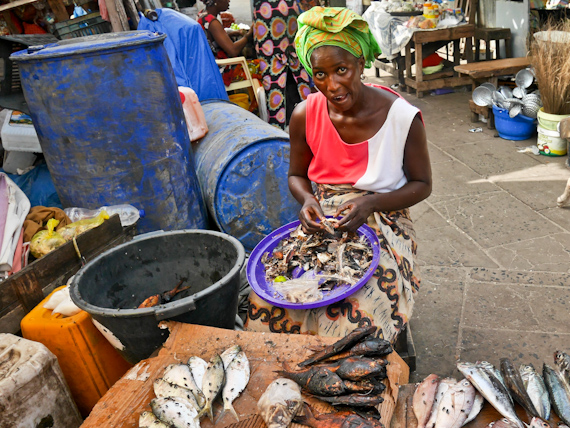
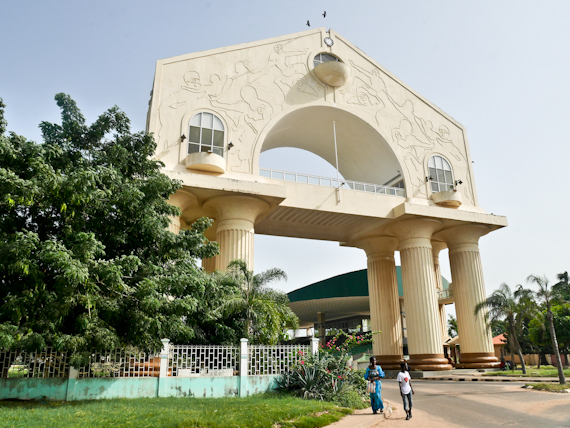
For the real Gambia experience, however, you’ll have to travel east upriver. It’s not quite as daunting as it sounds as the roads are good and there’s some basic accommodation. I arrive at the Banjul Ferry terminal, so I can cross to Barra on the North Bank. The crossing only takes around 30 minutes but I wait for over two hours. This is where the real Africa intrudes as the boats are often delayed and loading can be slightly chaotic. Vendors trawl the crowds selling coconuts, sweets and drinks and there’s something of a community atmosphere.
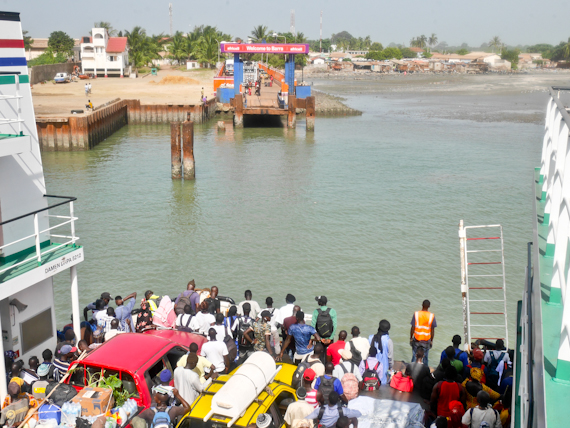
The drive, east along the north bank, takes me past fields of ground nuts, millet and watermelon, the good road lined by power lines. We pass through tiny villages and skirt the border with Senegal. My first stop is at Morgan Kunda Lodge, just 8 basic rooms with shower and mosquito nets.
It’s dusk when I arrive so I get up early morning for bird watching by the river. With the guide, I make my way through dew-soaked grassland to the Bao Bolong Wetland Reserve. To the sound of the dawn chorus, it’s a magical moment as we get to the water and the sun comes up. Birders can spot the rare Egyptian Plover, White-Crested Tiger Bittern and Martial Eagle.
Around 90 minutes east is the Wassu National Monument, boasting the largest collection of megaliths in the country. In fact, it has UNESCO World Heritage status as it’s one of four sites that compose the Stone Circles of Senegambia. 119 stones are arranged into 11 circles here, with the tallest being around 3m high. It was discovered in the 1960s and excavated in 1972.
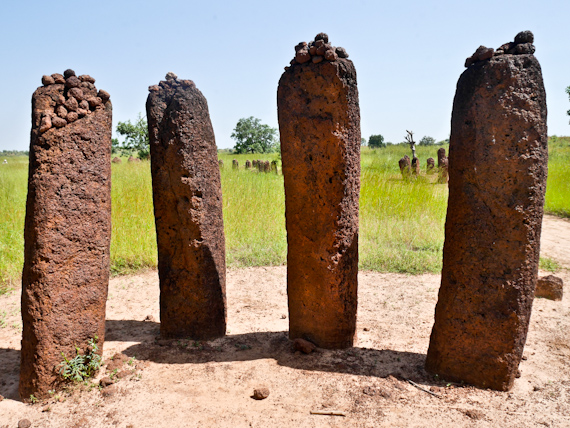
There’s a small museum detailing the history, with maps showing megaliths all over West Africa including Senegal, Mali, Nigeria and Guinea. It’s not quite Stonehenge but the circles are impressive nevertheless, not something that you expect to find in the middle of Africa. Although little is known about their builders, carbon dating pegs their construction to around 1200 years ago and it seems they were burial sites.
Around ten minutes from the stone circles, I board a boat at Kuntaur to take me upriver into the River Gambia National Park and Baboon Island. The banks are lined with thick tropical rainforest and there are several hippos bathing in the shallows. I’m bound for the Chimpanzee Rehabilitation Project which has introduced around 100 rescued chimps to three of the islands.
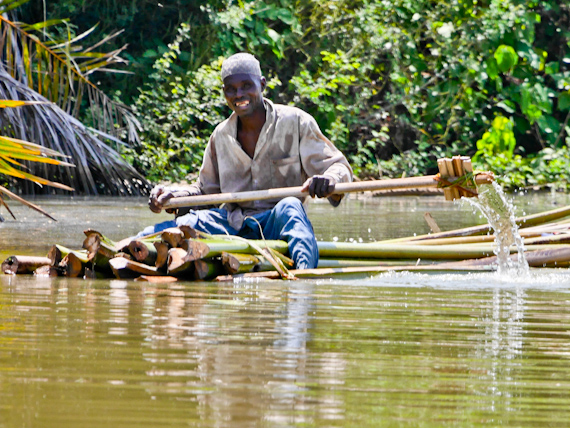
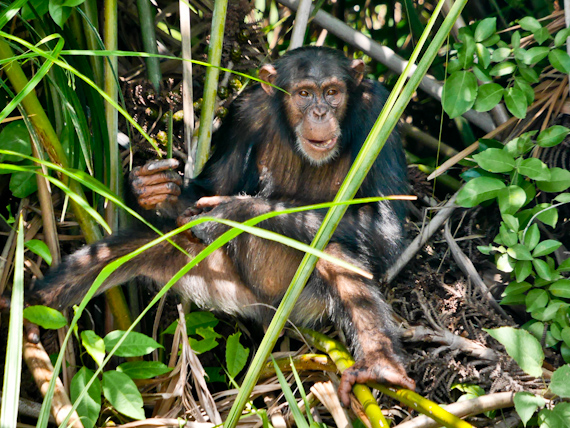
Tourists are not allowed to step ashore so we watch a family grabbing the food the boatman provides. They say the chimps are self-sufficient and the feeding is just to get them out on the banks. You can actually stay nearby in simple twin-bedded safari tents and take night walks to see bush babies. Best of all, wake up to the sights and sounds of the river.
Another hour’s drive east I reach the furthest point upriver, around 200km from Banjul. I cross by simple ferry to Janjanbureh on the North bank of McCarthy Island. This was known as Georgetown until 1995 and a few dilapidated colonial buildings are the only reminders that this was once a major trading centre for groundnuts.
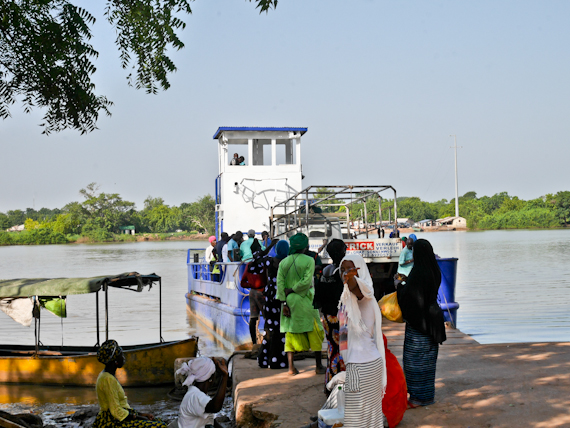
The warehouses are supposedly where slaves were kept, although they were constructed in the late 19th century, long after slavery was abolished. That doesn’t stop one enterprising place calling itself the Slave Dungeon, complete with recently added chains. In a park behind, there’s also the Freedom Tree, supposedly where runaway slaves were granted their freedom if they could touch it.
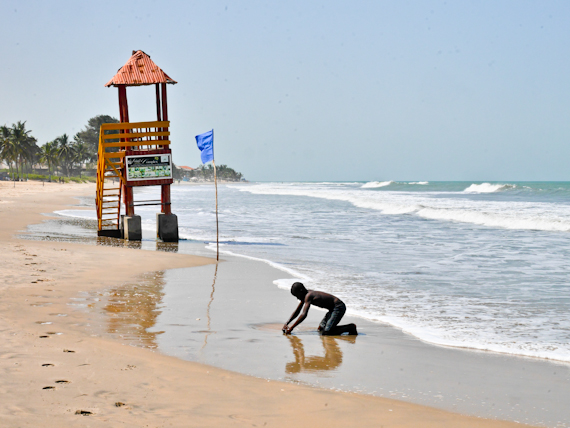
Without your own vehicle, exploring upriver is tricky as the only public transport I saw are the packed collective bush taxis known as Gelegeles. The Ninki Nanka Trail is a new initiative from Gambia Tourism and the idea is to utilise a Nile cruise boat to take tourists on the river, stopping off along the way. As well as sleeping onboard there’ll be opportunities to stay with locals in their compounds. It’s hoped that this will start in 2020.
Tell Me More About The Gambia
Visit the Gambia has tourist information.
The Gambia Experience has direct flights to Banjul from Gatwick, Birmingham and Manchester.
Gatwick Express has a high-frequency, non-stop shuttle service from London Victoria in the heart of London to the airport. The trains have real-time passenger information systems, air-conditioned carriages, power sockets and Wi-Fi. Book online for a 10% discount.
The Swiss Boutique Hotel makes a good base on the beach.

